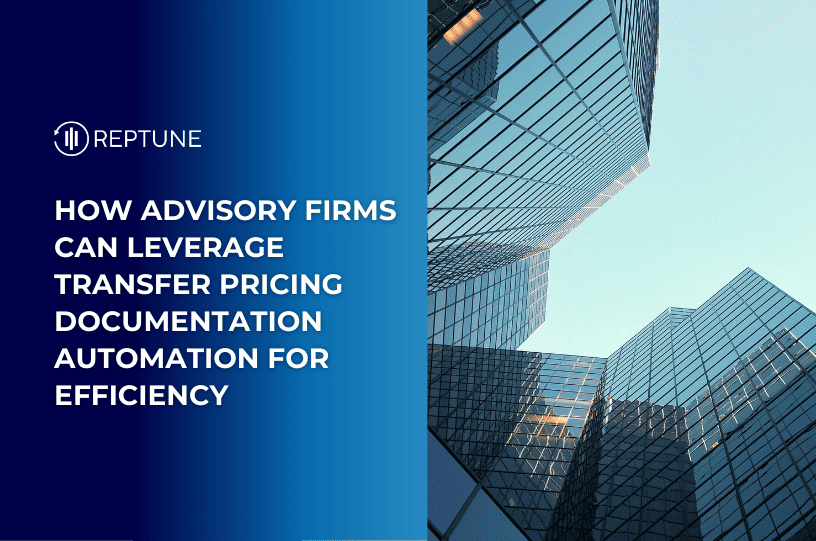
Technology adoption is transforming the tax and accounting industry, yet many advisory firms struggle to implement it effectively. According to the 2024 Tax Firm Technology Report, while 88% of firms recognize technology as critical, many lack the resources, leadership, and workflows to fully utilize it.
For advisory firms offering transfer pricing (TP) services, this challenge is even greater. Manually managing transfer pricing documentation is time-consuming, error-prone, and exposes firms to compliance risks. However, with automation tools like Reptune.net, firms can streamline documentation, enhance accuracy, and scale their advisory services efficiently.
This article looks at why advisory firms struggle with using new technology. It also shows how automating transfer pricing documentation can help them work better and follow rules more easily.
Despite recognizing technology’s importance, advisory firms face several challenges in implementation:
For TP advisory firms, this results in manual workflows, compliance risks, and inefficiencies, ultimately limiting the firm’s ability to scale and compete.
Many firms still rely on spreadsheets, emails, and outdated software to manage transfer pricing compliance. This leads to:
❌ Time-Consuming Data Collection – Gathering intercompany transaction data manually is inefficient.
❌ Higher Risk of Errors & Non-Compliance – Lack of standardized documentation increases audit risks.
❌ Inconsistent Reporting – Difficulty in aligning Master Files, Local Files, and CbCR across jurisdictions.
❌ Limited Scalability – Manual processes restrict a firm’s ability to handle more clients efficiently.
With a tax technology tool like Reptune.net, advisory firms can:
✅ Automate Data Collection & Integration – Eliminate manual data entry errors.
✅ Generate Master & Local Files in Minutes – Standardized documentation ensures compliance.
✅ Ensure Real-Time Compliance Updates – Stay aligned with OECD, IRS, and local tax regulations.
✅ Increase Efficiency & Profitability – Handle more clients without increasing operational costs.
By automating transfer pricing documentation, firms can redirect resources to higher-value advisory services, improving both efficiency and client satisfaction.
To successfully implement a transfer pricing documentation tool, firms must:
📌 Identify Pain Points – What inefficiencies exist in your current TP documentation process?
📌 Define Objectives – How will automation improve compliance and client service?
📌 Select the Right Solution – Choose software that integrates with existing accounting and tax systems.
Many advisory firms struggle with full-scale tech rollouts. Instead:
✔ Start with a Pilot Program – Test automation tools like Reptune.net with a small set of clients.
✔ Implement in Phases – Introduce automation gradually to ensure a smooth transition.
✔ Ensure Team Buy-In – Involve tax professionals in the selection and onboarding process.
Many advisory firms hesitate to adopt transfer pricing documentation automation due to cost concerns. However, cloud-based tax technology offers:
✔ Flexible Pricing Models – Subscription-based software eliminates high upfront costs.
✔ No IT Infrastructure Requirements – Cloud-based solutions reduce hardware expenses.
✔ Faster ROI – Improved efficiency and compliance generate measurable financial benefits.
Small and midsize firms can use tools like Reptune.net. These tools help them compete with larger firms. They automate documentation and keep costs low.
The 2024 Tax Firm Technology Report by Thomson Reuters Institute shows that many firms lack structured technology training. To ensure successful adoption of TP automation tools, firms should:
📌 Provide Hands-On Training – Regular workshops ensure seamless transition to automation.
📌 Designate Internal Technology Champions – Assign a point person to oversee implementation.
📌 Encourage Continuous Learning – Keep teams updated on new compliance and tech developments.
To assess the effectiveness of transfer pricing automation, firms should track:
📊 Time Savings on Documentation – Reduction in hours spent on manual TP reporting.
📊 Error Reduction Rates – Fewer compliance errors and audit risks.
📊 Revenue Growth from Efficiency Gains – More capacity to serve additional clients.
Firms that measure these metrics can clearly demonstrate the ROI of tax technology adoption.
Advisory firms must embrace transfer pricing documentation automation to remain competitive and compliant. Manual workflows are no longer sustainable—automation improves efficiency, reduces errors, and enables firms to scale.
With Reptune.net, firms can streamline TP compliance, automate documentation, and gain a strategic advantage in the market. By adopting a structured, phased approach, even firms with limited resources can successfully implement tax technology solutions.
Are you ready to automate your transfer pricing documentation? Contact us today to learn how Reptune can transform your firm!
